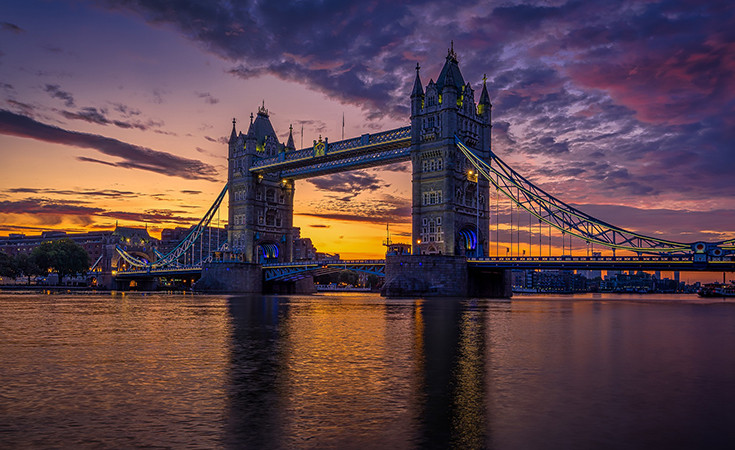
The Tower Bridge is actually a suspension bridge spanning over the Thames. As London was expanding quite quickly, many bridges were constructed to connect the two banks of the Thames, with the first one being London Bridge, followed by many more mostly being built west of it so as not to obstruct the functioning of the city pier.
In the 19th century, London experienced a boom to the east of London Bridge, which made it necessary to construct a new bridge. It was decided that the construction of a suspension bridge would not obstruct river traffic on the Thames. The bridge is raised by two hydraulic engines. The bridge itself contains 70 thousand tons of concrete. The skeleton of the bridge is mostly steel, of which 11 thousand tons were necessary. The bridge’s towers are built from granite and stone.
The high pedestrian platform was closed in 1910 because Londoners thought it to be unsafe, preferring instead to walk over the lower side of the bridge. In 1982, the platform was re-opened and is now used by tourists who want to visit the museum. The bridge is property of a charity foundation. During your visit to the bridge, you will find out about the engines which raised the bridge until 1894, as well as about its newer electronic replacement.
The second part of your visit will mostly deal with the history of London. The top floor of the Tower Bridge houses a museum of the world’s most famous bridges, including Tower Bridge itself.
 Ticket price for Tower Bridge
Ticket price for Tower Bridge
Regular ticket price: £ 9.80
Reduced ticket price: £ 6.80 - for pensioners and students
Reduced ticket price: £ 4.20 - for children aged 5 to 15
Free entrance - for children up to 5 years.
 Tower Bridge opening hours
Tower Bridge opening hours
From April to September: 10:00 a.m. to 6:00 p.m.
From October to March: from 9:30 a.m to 5:30 p.m
Tower Bridge is closed on December 24, 25 and 26